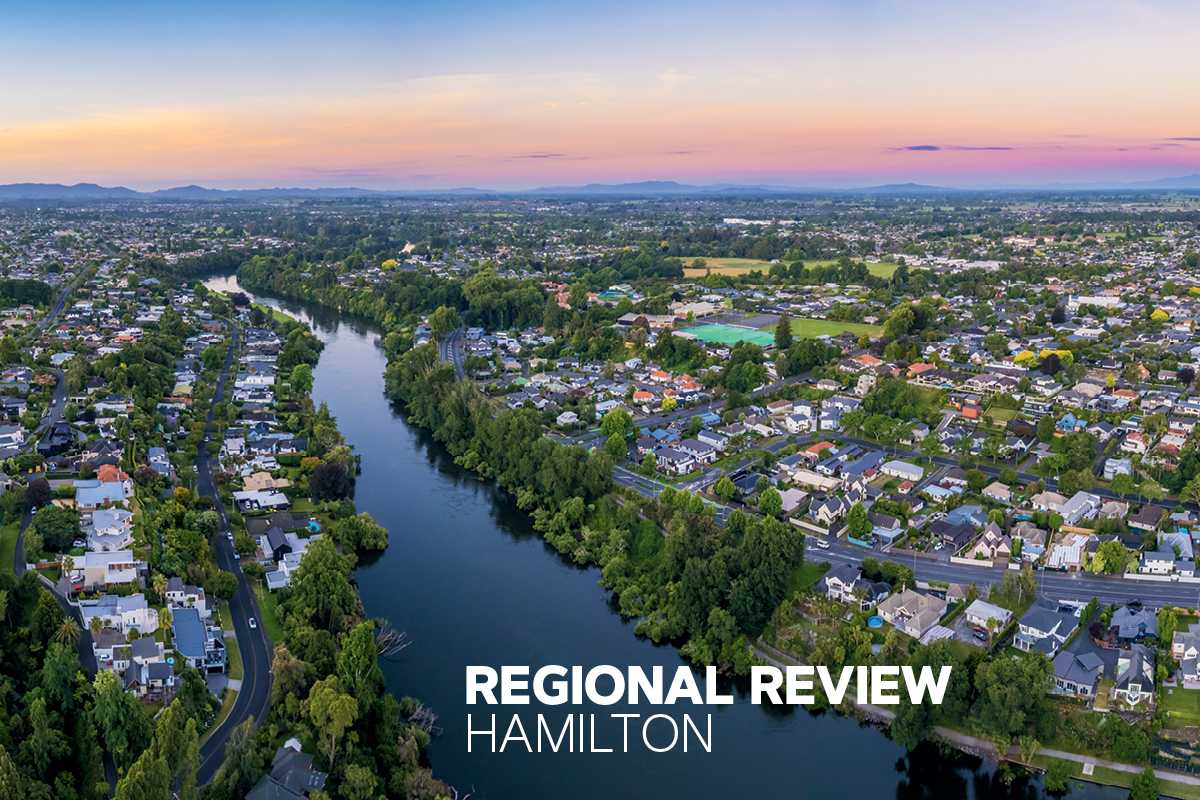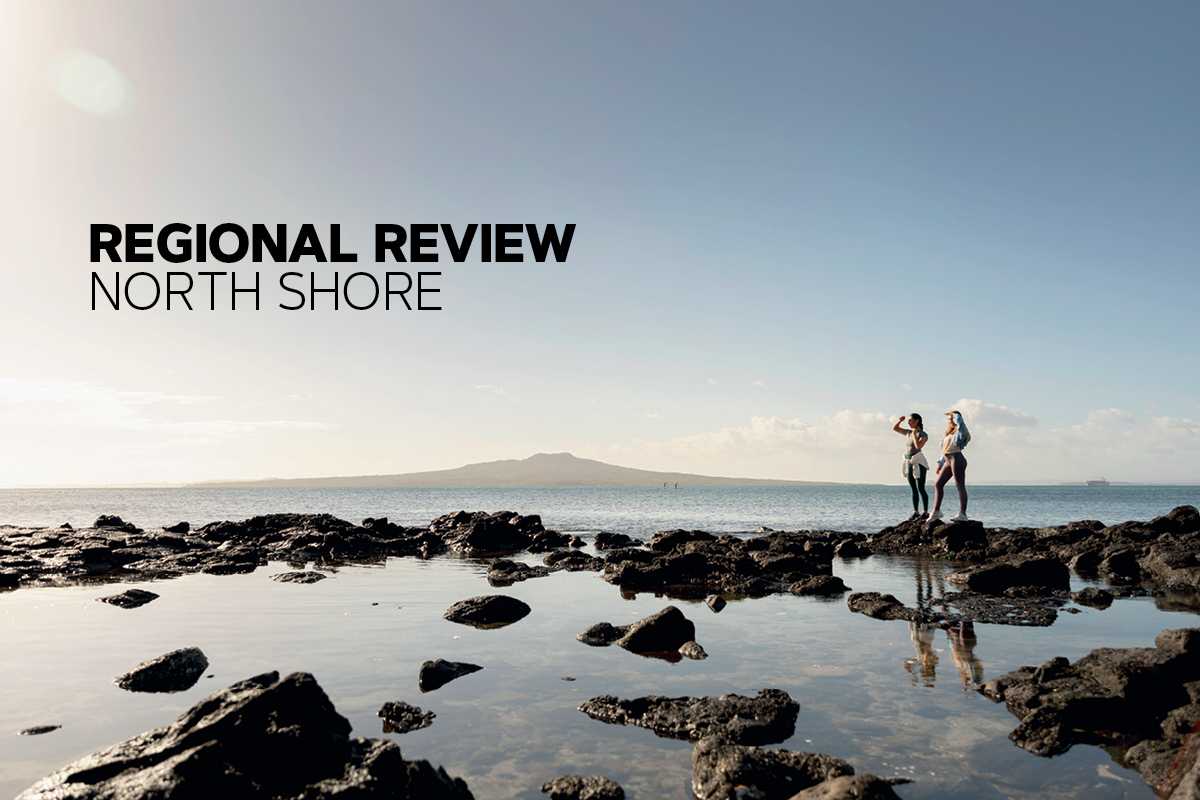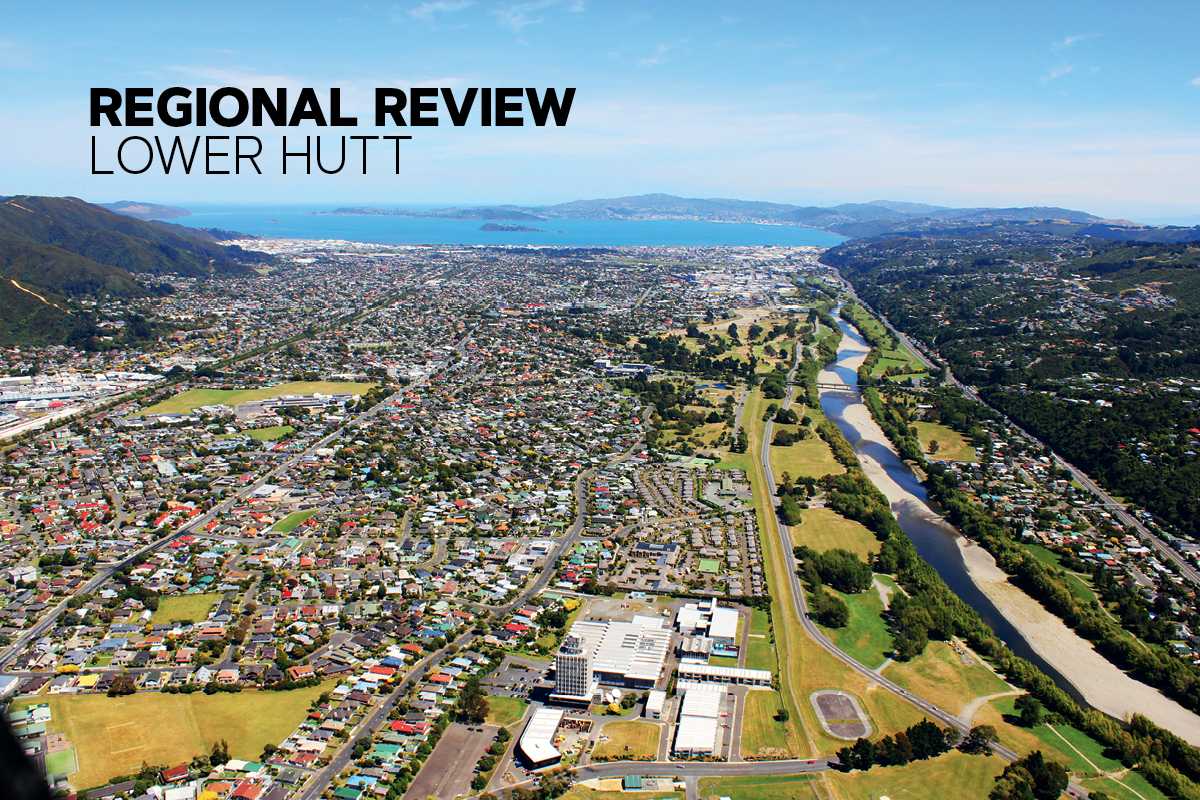
Welcome To The Big Little Smoke
After years of being seen as the small sibling of Auckland, Hamilton, or The Tron as it is affectionately known, is stepping into the limelight, writes Sally Lindsay.
1 November 2022
Situated on the banks of the Waikato River, Hamilton is New Zealand’s largest inland city. It is a central, affordable, increasingly river-facing city which is growing fast.
The population is youthful and innovative: about half of its residents are under the age of 30. It’s also a culturally diverse city, home to more than 80 ethnic groups.
Despite its strong population growth, from 160,800 in 2016 to 176,500 in 2020, it is comfortable in its own skin. At a time when city centres are suffering around the country in the wake of Covid-19, Hamilton is going through a renaissance, with new CBD developments making the most of the magnificent Waikato.
While Hamilton is larger than some Australian capital cities, such as Hobart and Darwin, it’s easy to get around. It is also a 90-minute drive to Auckland, a short drive to the surfing haven of Raglan, mountains for skiing and not too far from Rotorua, Tauranga and Taupo. This presents opportunities for day trips, exploring and discovering, and Hobbiton is just around the corner.
Hamilton is in the centre of New Zealand’s largest dairying area. Agriculture is the main contributor to the city’s economy and has an abundance of job opportunities, with demand for skilled workers that is only expected to increase with the area’s growth.
Key employers in the city are top science research industries, manufacturing, wholesale and retail. The tech sector is enormous within Hamilton, and is innovative. It isn’t just providing more jobs, it’s generating higher paid employment, raising the average income of Hamiltonians.

ABOVE Riverside Hamilton is New Zealand’s largest inland city.
AFFORDABLE AREA
Other major businesses in the city include Rabobank, ACC, AA and Waikato University, while the largest employer is Waikato Hospital with more than 8000 staff.
Those industries are attracting people to Hamilton, which has always been seen as affordable compared with Auckland and Wellington, particularly the housing.
From an investment angle it’s like a satellite city of Auckland. House price rises compared to other major centres have been moderate in the 12 months to October 1, ranging from 7.9 per cent in Whitiora to 1.9 per cent in Dinsdale, CoreLogic data shows.
Plenty of people have been moving to Hamilton for employment and 30-35 per cent of rentals on Lodge Real Estate’s book have gone to people from elsewhere in the country. “Many are renting to discover the suburb they want to buy in,” says managing director Jeremy O’Rourke.





CLOCKWISE FROM TOP LEFT The tranquil Waikato River offers walking and cycling trails or a tranquil place to sit; a new subdivision with plenty of planned green space; popular Hamilton Gardens offers visitors a peaceful escape from the city; nearby Hobbiton is less than an hour away; twilight settles on Victoria St in the central city.
“Plenty of born and bred Hamiltonians, who went overseas or to larger cities, are also returning because they want their children to have a similar childhood to the one they had.
“They’re coming back to a city that has changed for the better,” he says. The scale of the new inland port is enormous and the Waikato Expressway is attracting Auckland businesses, which can take advantage of lower cost structures.
“It’s possible to buy all kinds of homes from apartments to lifestyle properties in Kirikiriroa and prices are still affordable for many. A lot of thought has gone into architecture in new projects and the way housing is included, while many Hamiltonians are also appreciating living closer to the Waikato River, albeit in smaller homes,” O’Rourke says.
The city’s median house price of $768,000 in August is still a bit under the NZ median price of $800,000, vs Auckland at $1.1 million and Bay of Plenty at $895,000, REINZ data shows.
iFindProperty agent Ben Meehan says while there are always deals to be done, the biggest hurdle for all buyers is rising interest rates. He says the higher rates have made cash flow particularly difficult for new investors.
Anecdotally, Waikato Real Estate business development manager Michelle Pearson says one or two landlords have sold up due to rising interest rates, but so far the numbers have been low.
“Generally, property investors are not highly leveraged, so I wouldn’t expect to lose many of the properties we manage due to rising interest rates.”
The most at risk, Pearson says, will be first time investors, who bought a property in the past 12 months with a 60 per cent loan-to-value ratio and initially on a low interest rate. “When their loans roll over and they have to re-fix, I anticipate them feeling the pain and looking for the exit door.”
‘A lot of thought has gone into architecture in new projects and the way housing is included’ JEREMY O’ROURKE
MARKET CHANGES
Meehan says rising interest rates stopped sales from April to August. During that time a lot of vendors believed they could sell their existing properties for prices the same as last year or similar to new builds and some were given rental estimates higher than they should be. Properties were sitting on the market and others were withdrawn.
“A lot of buyers and sellers had to be educated and vendors are now starting to be more realistic about prices so they can find buyers.”
The biggest buyer group recently, says O’Rourke, has been people trading up and taking advantage of lower prices as the number of listings on the market increases, although they are coming back now. The number of listings dropped from 1050 in September to 950 in October.
Higher end properties in the $1-$1.2 million bracket are selling well and prices are back to where they were last year, which is healthy for the market, says Meehan.
“Anything up to $650,000 is the first home buyer market and between these two price brackets houses have sat on the market waiting for vendors to bring prices down to where buyers are willing to sign up,” he says.
It is taking 51 days to sell a property; at the same time last year it was taking 37 days, according to REINZ data.
Hamilton has long been a favourite of property investors. First home buyers had a clearer field in April, after the government flagged a change in tax policy to investors, but they have returned, says O’Rourke.
“Investors are gradually coming back into the residential market after being absent for most of the past year and some trying their hand at small commercial property investment and the global share market, which is now in turmoil.
“Although yields have come back and rents are under pressure, there are good opportunities for investors who are cashed up or don’t owe a lot on their mortgages,” he says.
On the north-east side of Hamilton, Greenhill Park is a new suburb development being created by local developer Chedworth Properties. On 136 hectares of former farmland it will provide 1600 residential properties to be built with partners.
“These will be modern homes which are more compact but with access to shopping services and access to the ring road, close to where the inland port is,” says O’Rourke.
While many are looking at the new build market, some are looking at existing properties where value can be added.
Meehan says for investors prepared to look further afield than Hamilton city boundaries, yields and opportunities can be had. “The majority of investors are more interested in cash flow than capital gains.

DIFFERENT LEVEL
“If they can buy an existing property where there is enough land to add another bedroom, undertake a major renovation or add a minor dwelling, they will. It doesn’t matter what market they are buying in if the cash flow gains are there.
“The days of investors wanting to buy only a stand-alone house in a good street have gone.”
Another feature of the market is Hamilton investment opportunities compared to South Auckland are on a different level, he says. “For example, in South Auckland’s Otara and Manurewa suburbs many of the properties are the same age, same build type, on similar streets. Hamilton has vastly different property types on good and bad streets. There are $1 million properties to those under $500,000 on the same street, so buyers and investors focus on suburbs overall rather than individual streets.”
In the north of Hamilton, new homes in good sites in fast-growing Flagstaff and Rototuna will go for around $1 million or more.
Hamilton investors have most of their rentals in these areas. They are popular for renters because of their proximity to good schools, The Base shopping centre and easy access to Auckland, says Pearson. Less popular are the CBD and university precincts.
The rental market has changed in the past two years, with Pearson saying there is an oversupply of units since Covid and a shortage of five-star tenant applicants. “That said, our vacancy rate of just over one per cent remains low.
“With 10-20 applicants for every property, the quality of tenants is probably unchanged, but given the changes to RTA and the removal of the 90-day notice, property managers / landlords are less likely to take a risk on a tenant, as they have no means to evict them if the tenancy goes bad. That means property managers and landlords will often wait longer to find a higher quality tenant, even if that means leaving the property empty a few weeks.”
TENANT PATTERNS
Quinovic assistant manager Cullum Holyoake says most tenants leave a change of property until the start of the year.
Rentals across the two to fivebedroom Hamilton properties handled by Quinovic are sitting for 20 days on the market before a tenancy agreement is signed. Most tenants prefer a three to four-bedroom house. However, a recently listed five-bedroom stand-alone house has attracted a slew of inquiries.
Rents in Hamilton are stabilising and are comparable to where they were a year ago. “A number of people who can’t sell their properties at the prices they want have put their homes in the rental pool, but it hasn’t really affected the market.”
Holyoake expects the number of rentals to continue to increase in the next 12 months with landlords buying and continuing to upgrade existing properties, which is good for investors and tenants. “We have seen positive industry change over the past two to three years and we don’t expect a slowdown in market growth over the next couple of years.”

CORELOGIC DUNEDIN KELVIN DAVIDSON, CHIEF PROPERTY ECONOMIST
THE DATA
Rental data is sourced from the Ministry of Business, Innovation and Employment based on rental bonds lodged. This data is supplied to us grouped into geographic areas based on statistical area units used by Statistics NZ for the census and as a result do not always match well with common usage suburb names.
The rental data for each area is matched to property price information from our database to determine property prices and therefore yield. The yield is calculated as the annualised rental income divided by the median property value calculated using our E-Valuer.
MARKET COMPOSITION
The Hamilton market is weighted towards houses, with 1,362 of the 1,605 (85 per cent) properties recently available for rent in that category. There have also been 159 flats (10 per cent) and 84 apartments (5 per cent). All those apartments have either been in Hamilton Central/Maeroa/Frankton Junction, Hamilton East/University, or Deanwell/Melville/Fitzroy.
The largest market for rental houses recently has been Te Kowhai/St Andrews/ Queenwood (264), with Fairfield/Fairview Downs, Flagstaff/Rototuna, and Hillcrest/ Silverdale/Tamahere also important areas. In terms of share of houses amongst all properties recently for rent, other areas have had higher figures, e.g. 100 per cent in Dinsdale North/Nawton, and Dinsdale South/Frankton. By contrast, Claudelands’ concentration figure for houses lately has only been 50 per cent.
That’s because it also has a reasonable concentration of flats. Other important areas for flats for rent have included Hamilton East/University, and Hamilton Central/Maeroa/Frankton Junction.
HOUSE SIZE, BY BEDROOM COUNT
Looking specifically at houses (1,362 properties), 44 per cent recently for rent have had three bedrooms, with another 29 per cent in the two-bedroom bracket, 17 per cent with four. Another 8 per cent have had one bedroom, and 2 per cent with five. Mix of houses for rent in Hamilton is a bit more evenly distributed by size than other areas, which tend to be mostly three bedrooms.
The largest markets for three-bedroom houses recently for rent have been Te Kowhai/St Andrews/Queenwood (108) and Fairfield/Fairview Downs (90). The latter has also had the highest concentration rate of three-bedroom properties amongst the house stock recently for rent, at 62 per cent.
Te Kowhai/St Andrews/Queenwood (75) has also had the most two-bedroom properties recently available for rent, followed by Hamilton East/University (66). In terms of concentration rate, the figure is highest in Claudelands (50 per cent). Flagstaff/Rototuna has had the most four-bedroom houses recently for rent (66), and the highest proportion amongst all houses (48 per cent). It’s also an important market for five-bedroom houses for rent. Hamilton East/University has the most one-bedroom rentals.
RENT AND YIELD
By matching average value to rent we can look at gross yield for threebedroom houses in each area.
Median weekly rents for threebedroom houses in Hamilton range from $540 in several areas, up to $620 in Flagstaff/Rototuna. The median values for these properties also have a relatively tight range of $699,550 in Dinsdale South/Frankton up to $943,050 in Flagstaff/Rototuna. The result ranges from 3.2 per cent in Claudelands up to 4 per cent in Dinsdale South/Frankton. Given a typical yield nationally of less than 3 per cent, these figures may look quite appealing to some investors, especially given that rents themselves for three-bedroom houses across Hamilton have typically risen by at least 7-8 per cent over the past year.



